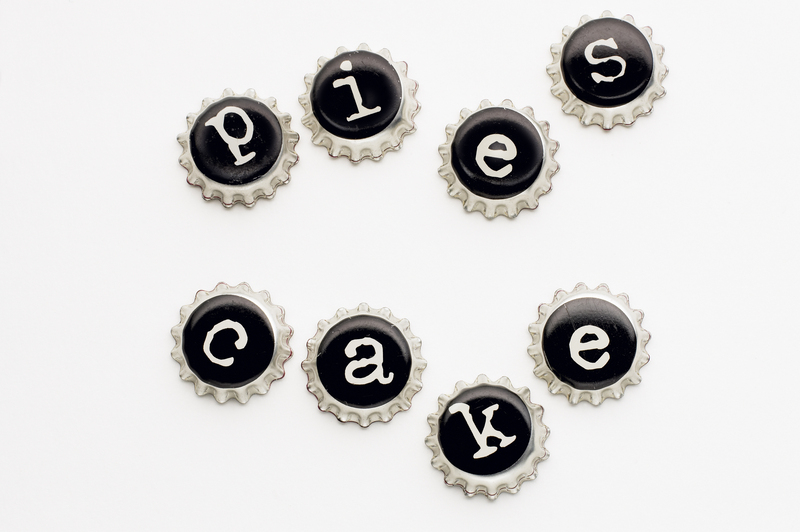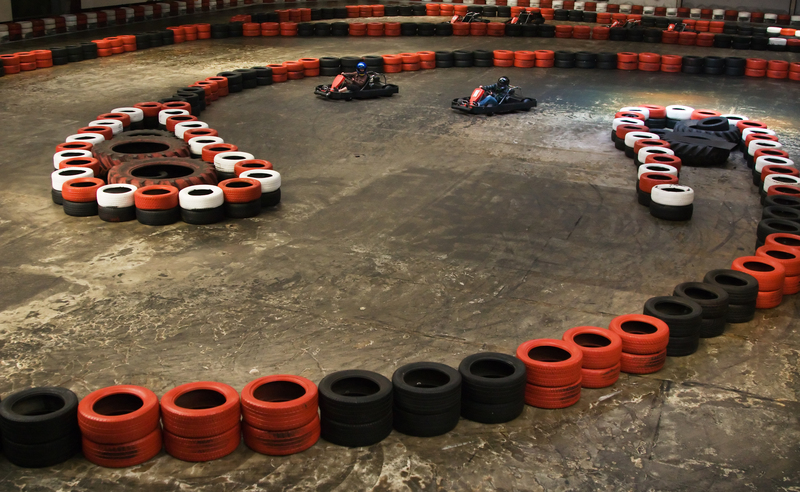
Repurpose and Revamp: Clever Upcycling to Reimagine Household Waste
In today's world, where environmental awareness is growing by the day, upcycling is emerging as a sustainable and innovative way to deal with the ever-increasing stream of household waste. Instead of tossing away unwanted items, more and more individuals are discovering the art of repurposing and revamping everyday objects to give them a second life. In this all-encompassing guide, we'll explore creative ideas, practical tips, and the profound environmental impact made possible by clever upcycling projects. Whether you're a seasoned eco-warrior or a crafty novice, you'll find inspiration to start reimagining household waste today.
- What is Upcycling? Understanding the Concept
- Why Repurpose and Revamp Household Waste?
- Getting Started: Upcycling Basics
- Common Household Items to Upcycle
- Clever Upcycling Project Ideas
- Environmental Benefits of Upcycling
- Overcoming Challenges and Expert Tips
- Final Thoughts: Join the Upcycling Movement
What is Upcycling? Understanding the Concept
Upcycling is the creative process of transforming old or discarded household materials into new, useful, and often aesthetically pleasing products. Unlike recycling, where materials are broken down and reprocessed, upcycling preserves the original form of the item while enhancing its value through artistic or functional adaptation.
The term upcycling was first popularized in the 1990s, and since then, it has gained traction as a key part of sustainable living. By repurposing household waste, we reduce the flow of trash to landfills and contribute to a circular economy that puts less strain on natural resources.
- Reimagining household waste unlocks creative potential for everyday materials.
- Upcycled items often become one-of-a-kind pieces for home, garden, or personal use.
Why Repurpose and Revamp Household Waste?
There are many compelling reasons to repurpose and revamp what we typically consider as trash:
- Environmental Preservation: Reduces landfill waste and conserves natural resources.
- Economic Benefits: Saves money by turning "junk" into useful objects, decor, or furniture.
- Personal Expression: Allows you to showcase creativity and personalize your living space.
- Educational Opportunities: Teaches children and adults about sustainability and DIY skills.
- Community Building: Offers the chance to participate in local upcycling workshops and exchanges.
In essence, when you reimagine household waste, you play a vital role in fostering a greener, more responsible, and resourceful society.
Getting Started: Upcycling Basics
Before you launch into your first project to repurpose and revamp household waste, it's helpful to understand some essential principles.
1. Identify Reusable Materials
Begin by assessing the waste produced in your home. Look for objects made from:
- Glass (jars, bottles)
- Plastic (containers, bottles, lids)
- Metal (cans, tins, bottle caps)
- Wood (furniture, scraps, pallets)
- Textiles (old clothes, linens, towels)
- Paper and Cardboard (boxes, tubes, books)
2. Brainstorm Possible Uses
Ask yourself:
- Can this item serve a new function?
- Can it be combined with other materials for a unique result?
- Could it be upcycled as a gift or for charity?
3. Gather Upcycling Tools and Supplies
Depending on your ideas, basic supplies might include:
- Scissors, screwdrivers, and pliers
- Paints, varnishes, glue guns, sandpaper
- Sewing machine, needles, thread
- Drill, saw, nails, or screws
Common Household Items to Upcycle
Let's take a look at some household waste items you can easily reimagine and turn into treasures:
- Glass Jars and Bottles: Can be turned into vases, lanterns, or food storage containers.
- Plastic Bottles and Jugs: Useful for planters, bird feeders, or organizational bins.
- Cardboard Boxes: Excellent for drawer dividers, children's playhouses, or gift packaging.
- Old T-shirts: Become cleaning rags, tote bags, or braided rugs.
- Wine Corks and Bottle Caps: Make for creative trivets, keychains, or artwork.
- Furniture: With sanding, paint, and imagination, tired chairs or tables can gain a whole new look and purpose.
Clever Upcycling Project Ideas: Repurpose and Revamp Household Waste
Ready for hands-on inspiration? Here are some upcycling project ideas to help you reimagine household waste and delight in the transformation of the ordinary:
1. Turn Old Drawers into Floating Shelves
Breathe new life into broken furniture! Repurpose dresser drawers by painting and mounting them as wall shelves. Use them to display books, plants, or keepsakes for instant character and extra storage.
2. Glass Jar Lanterns
Transform empty glass jars into charming lanterns. Wrap jar exteriors with wire or twine and insert tea lights or LED candles. For extra flair, paint frosted patterns or glue colored tissue paper to create a stained-glass effect.
3. T-Shirt Tote Bags
Convert worn t-shirts into reusable grocery bags--no sewing required! Cut off the sleeves, deepen the neck hole, and tie the bottom hem. This is an easy and practical way to reduce plastic bag consumption.
4. Pallet Garden Beds
Wooden shipping pallets can be revamped into durable garden beds or vertical planters. Line the inside with landscape fabric, fill with soil, and plant herbs or succulents for a compact, rustic garden.
5. Tin Can Desk Organizers
Save up empty soup or coffee cans, clean thoroughly, and revamp them as stylish desktop organizers. Decorate with washi tape, paint, or fabric scraps for a personalized touch.
6. Upcycled Bottle Cap Art
Collect metal or plastic bottle caps to create mosaic-style artwork, coasters, or fridge magnets. This is a fun project for families and a fantastic way to utilize small, often-overlooked waste items.
7. Wine Cork Bulletin Boards
Glue wine corks onto a sturdy backing board to fashion a unique and textured bulletin board, perfect for pinning notes, photos, and reminders.
8. Book Page Wall Art
Don't throw away damaged or outdated books. Tear out pages and create captivating wall art by arranging them in patterns or layering with inspirational quotes.
9. Sweater Sleeve Coffee Cup Cozies
Old sweaters past their prime can be snipped at the sleeves and sewn into reusable cup cozies. This not only keeps your coffee warm but adds vintage charm to your daily routine.
10. Plastic Bottle "Greenhouses"
Cut large clear plastic bottles in half and place over seedlings in your garden. These mini greenhouses protect young plants while reducing the need for new materials.
Environmental Benefits of Reimagining Household Waste
Upcycling projects do more than beautify our spaces or stretch our budgets--they have profound, positive impacts on the environment. Here's how:
- Reduces Landfill Volume: By reusing what we already have, we prevent tons of waste from ending up in dump sites every year.
- Conserves Energy: Upcycling skips the energy-intensive recycling process, keeping carbon footprints at a minimum.
- Preserves Resources: Less new material is required, diminishing the extraction and processing of raw resources.
- Promotes a Circular Economy: Materials stay "in play" longer, reducing linear "take-make-dispose" consumption models.
- Raises Eco-Consciousness: Upcycling inspires deeper reflection on our consumption patterns and motivates others to participate.
Overcoming Challenges and Expert Tips for Upcycling Success
While upcycling is rewarding, it can present some obstacles. Here's how to overcome common challenges and ensure your repurpose and revamp journey is a success:
Challenge 1: Lack of Time
- Tip: Start with quick wins. Try 30-minute projects such as turning jars into vases or making t-shirt bags. As you experience small successes, you'll be motivated to tackle bigger ideas.
Challenge 2: Limited Supplies
- Tip: Network with friends or neighbors to start a materials swap. Search local online groups (like Buy Nothing or Freecycle) for free items you can upcycle.
Challenge 3: Lacking Inspiration
- Tip: Visit online platforms such as Pinterest, Instagram, or upcycling blogs for ideas. Search tags like #upcycle, #repurpose, or #DIYrevamp.
Challenge 4: Crafting Skills
- Tip: Check for local workshops, community events, or online tutorials that teach basic DIY skills. With time and practice, technical confidence grows quickly!
Challenge 5: Sustainability Concerns
- Tip: Use eco-friendly paints, non-toxic adhesives, and reclaimed materials whenever possible. Always aim to reduce your environmental footprint throughout the process.
Final Thoughts: Join the Upcycling Movement
The possibilities to repurpose and revamp household waste are as limitless as your imagination. By embracing the art of upcycling, you not only curb waste and save money, but you also contribute to a healthier planet and inspire positive change within your community.
- Keep experimenting with new materials and ideas.
- Share your favorite upcycling projects on social media to encourage friends and family.
- Consider setting up a local swap meet or upcycling club to maximize collective impact.
Remember--every small action adds up. The next time you're about to throw something away, pause and ask yourself, "How else can I reimagine this household waste?" With each creative choice, you join a vibrant movement that's making the world a better place--one clever upcycle at a time.
Start Your Upcycling Journey Today!
Gather your supplies, unleash your creativity, and witness the satisfaction of turning household discard into something meaningful and beautiful. Repurpose and revamp: because sustainability never goes out of style.

